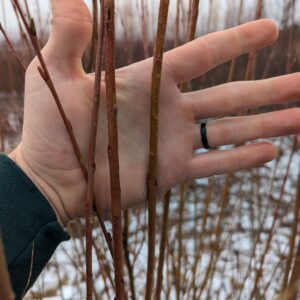Don’t you sometimes wish it was spring year-round?
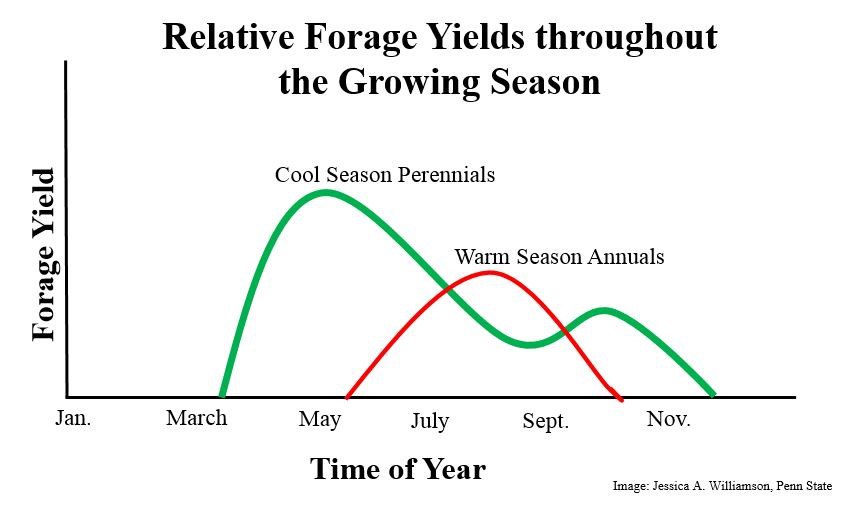
As I write this, snow is coming down towards the tail-end of February, and it feels like forever ago since I saw green grass or a tree in leaf. The long winter almost makes you forget what it’s like to just sweat during the summer. Then again, by August you’ve plum forgotten what it’s like to be cold.
There’s good reason to love the changing seasons. The rollercoaster ride that is forage production is not one of those reasons. The summer slump and a long winter without forage growth both require a lot of creativity and expense in order to keep livestock fed. My goal, as someone who is not a grazier, but rather a tree-person learning as much about grazing as possible, is to determine how and where trees can best compliment a grazing operation. What emerges is a picture of how the right trees, used strategically, can reduce the extremes of hot and cold, feast and famine, resulting in more moderate conditions throughout the year, and more feed during the summer and winter.
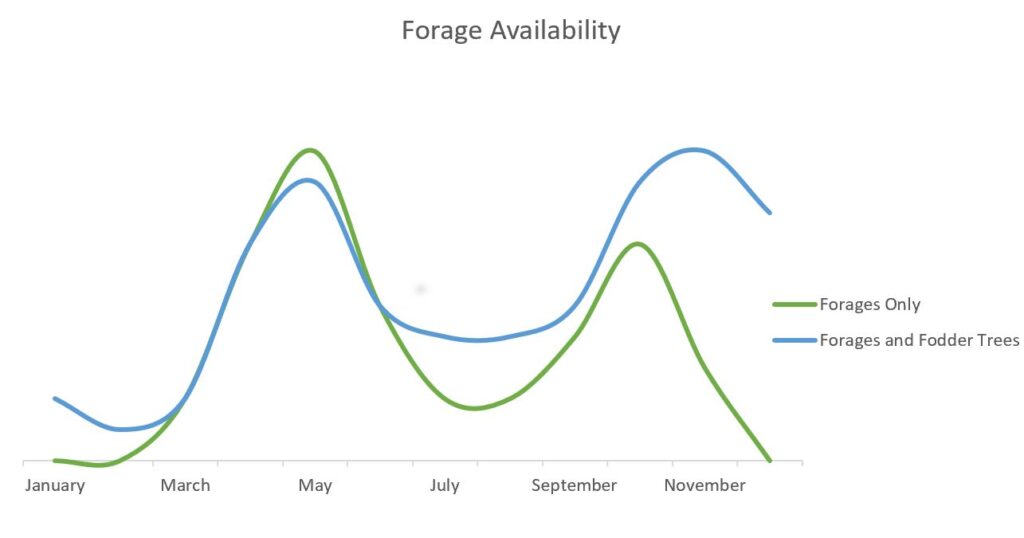
What follows is how trees can fit into a pasture-based operation focusing on ruminants, broken down by season.
Spring: This is the time when grasses and forbs shine. Ideally we select tree species that get their leaves late, and let lots of light through their dappled canopies so as not to interfere with the spring flush. Nitrogen-fixing species, like honey locust, black locust or mesquite will add more fertility to the soil, helping with forage growth throughout the year.
I am often asked how much forage production will be lost because of adding trees, with the assumption being that the competition for water and sunlight will necessarily mean a drop in grass growth. The short answer is, “it depends”. The wonderful thing is that, if managed well, adding trees can actually increase forage production compared to open pastures, especially for cool-season forages which otherwise shut down under summer heat stress. For example, research at Virginia Tech, which has the best silvopasture research plots I know of, showed a 16% annual increase of forage production under moderate shade compared to very sparse shade.
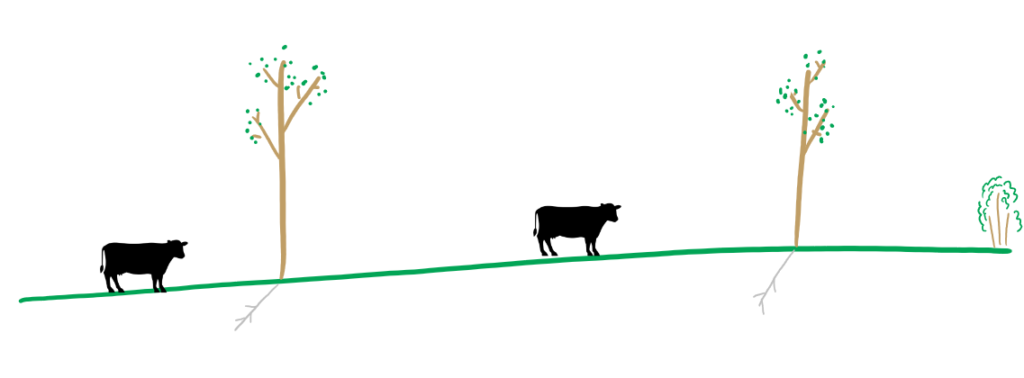
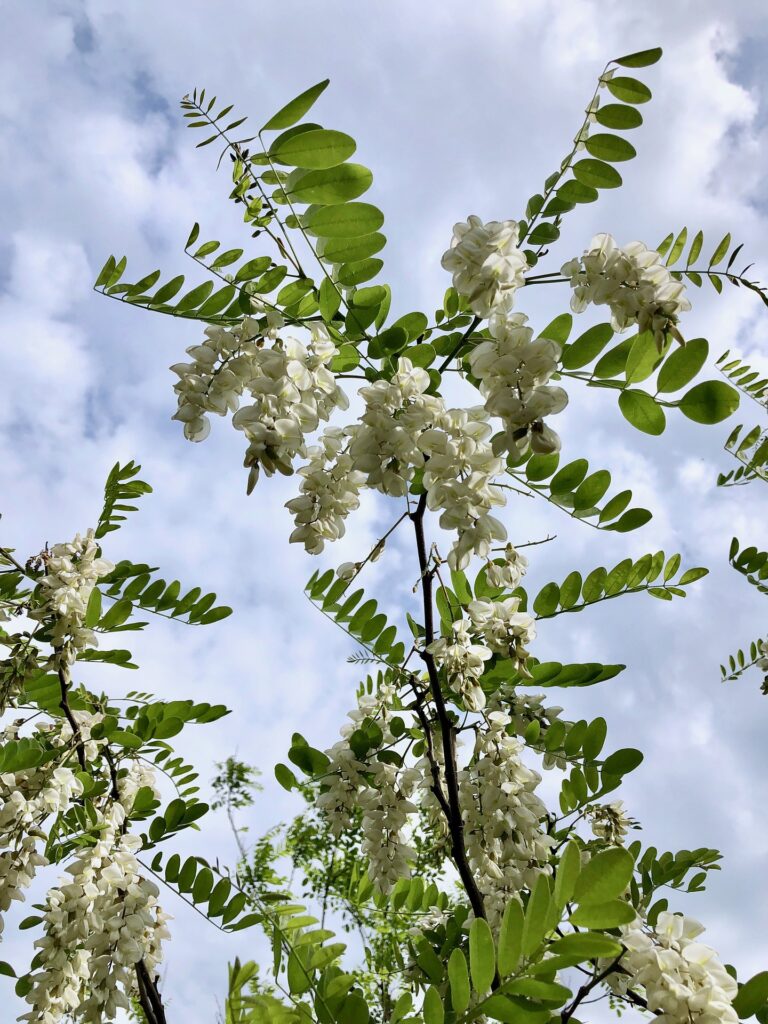
Summer: Summer is when the benefits of trees on livestock health come into focus, as they reduce the heat stress on livestock, thus keeping their production up. As numerous studies have shown, heat stress leads to reduced weight gain, lower rates of fertility and decreased milk production (Florida beef production; Heat stress and fertility; effect on milk production). By thoughtfully designing and managing a silvopasture, we can extend the active growing period of cool-season forages further into the summer, as trees reduce soil temperatures both through intercepting a portion of sunlight and through the cooling effect of evaporation.
In addition, tree and shrub species can be incorporated to provide edible leaves as browse during the summer slump. This is becoming common throughout the tropics (Jim Elizondo; Intensive Silvopasture), with impressive results capable of doubling carrying capacity or more (See here). While currently not done systematically in the more temperate regions of the United States, several species offer potential as summer fodder sources.
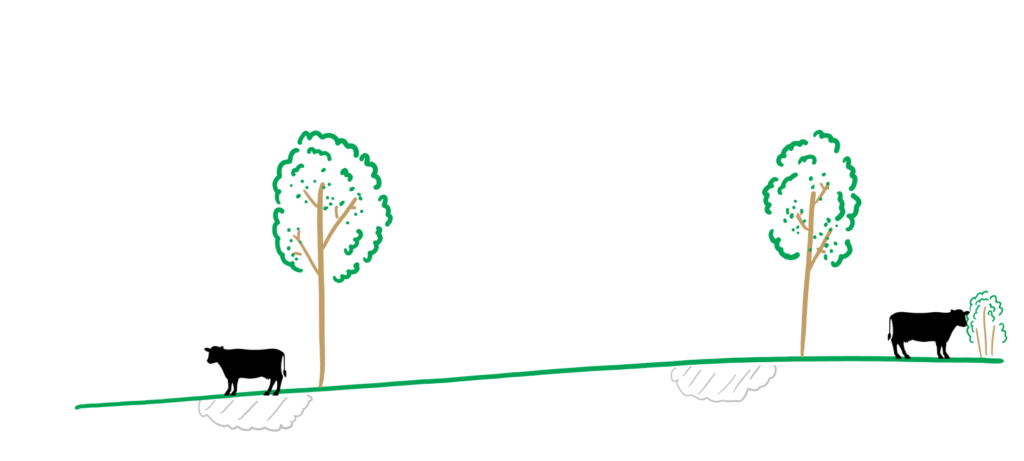
Fall: Here is where our feed-dropping trees start to play a major role. As early as August, persimmons can start dropping fruit that is loved by all manner of livestock. That fruit is high in sugars, providing a major energy boost. If you’re looking to butcher animals before winter, this can help add the final pounds to get a good quality finish.
Honey locust pods drop from November through January, and provide a high-energy feed that will stay good on the ground for months after they fall. Some persimmon varieties can hold on to the tree into January and provide additional boosts of feed into the depths of winter.
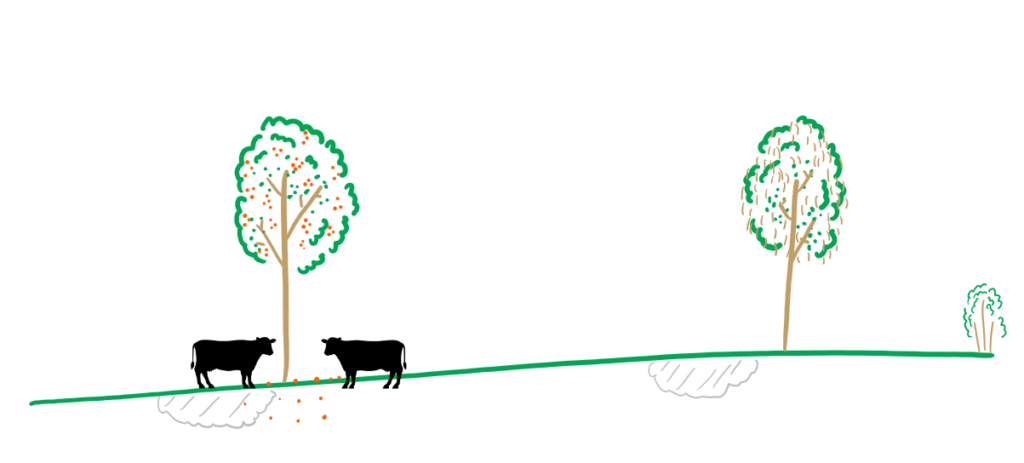
Winter: As mentioned above, trees that drop feed (fruits and pods) can contribute greatly to the amount of stockpiled feed going into winter, drastically cutting back on feed cost and keeping that much more income in the farmer’s pocket. We’re not talking a small amount either. A good honey locust tree can drop in excess of 100 pounds of pods per year, and 30 such trees can double the amount of feed produced on an acre of land annually. Additionally, having a good stand of trees will slow the howling winter winds, meaning livestock don’t need to burn as much energy staying warm, putting more energy towards production instead.
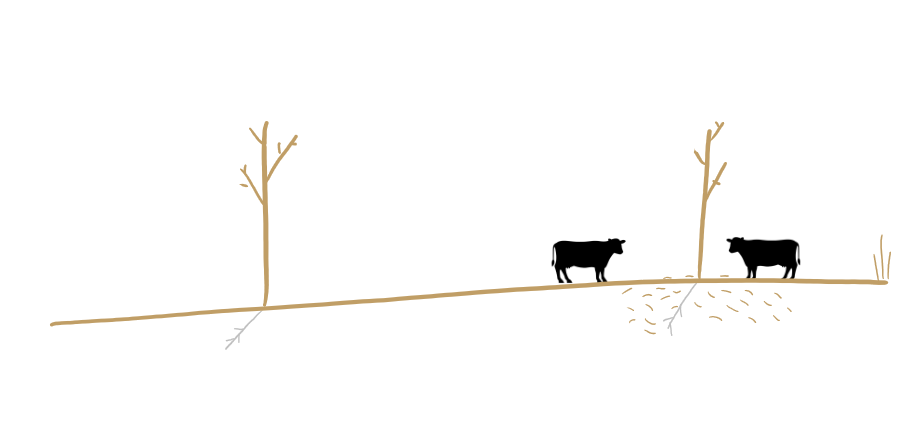
Let me be the first to recognize that there’s a real scarcity of documented examples of a full system like this in practice. The ingredients that make up this system are all certainly out there. Much of the best documentation from a grazier comes from Greg Judy, who shows how grass stays green and palatable longer in the shade of a honey locust (video), how even autumn olives can restore soil and offer valuable fodder (article and video) and how much cattle just plain love the shade (video). Virginia Tech has been doing research on silvopasture systems for years, and has likely the best example of well-spaced, high-yielding honey locust groves in the country (video).
Is this outside the box thinking? You bet! To many it’s about as far as you can throw something from the box. But if you’re reading this, my guess is your grazing practices would’ve been considered downright lunacy a generation or two back. So I’m in good company.
I don’t think grazing has yet reached its peak. I think there’s ample room yet for growth, for greater profit, for greater land restoration and to support more people doing good work. I believe trees can take regenerative grazing to a whole new level.



